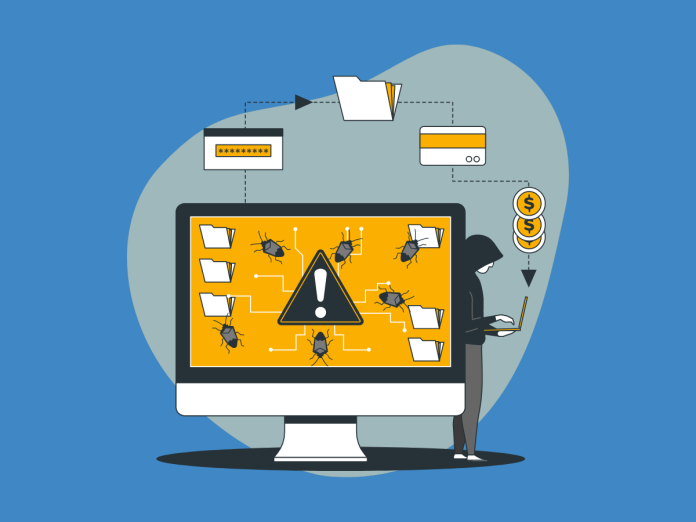Welcome to the Internet, where the online landscape is vibrant, dynamic, and unfortunately, filled with potential threats. In this comprehensive guide, we’ll delve into the intricate world of malware, exploring its history, various malware types, and most importantly, how to safeguard your online ventures.
Table of Contents
Understanding Malware
Malware, short for malicious software, is a broad term encompassing various digital threats designed to harm or exploit computer systems, networks, and users. It includes viruses, worms, adware, trojans, ransomware attacks, phishing attempts, and more. These insidious programs are crafted by cybercriminals with the intent to disrupt, damage, or gain unauthorised access to sensitive data.
History of Malware
The roots of malware trace back to the early days of computing, with the first computer virus emerging in the 1970s. Over the decades, the landscape has evolved, witnessing the rise of sophisticated malware attacks exploiting software vulnerabilities. Today, malware is a combination of traditional and innovative threats, posing challenges to cybersecurity experts and businesses alike.
The 7 Common Types of Malware Attacks
Viruses
Viruses, the pioneers of malware, operate by attaching themselves to legitimate programs or files. Once the infected program runs, the virus spreads to other files and systems. This self-replicating nature makes viruses notorious for their ability to quickly propagate across networks. Viruses can cause a range of issues, from data corruption to system crashes. To mitigate the risk of viruses, it is essential to employ robust antivirus software that offers real-time protection, regularly update system software, and exercise caution when downloading files from the internet.
Worms
Worms represent a distinct class of malware that doesn’t require a host file to propagate. Instead, they exploit vulnerabilities in operating systems or network protocols, spreading autonomously. Worms can rapidly infect a large number of devices, creating massive botnets that can be utilised for various malicious activities, such as launching distributed denial-of-service (DDoS) attacks. Protecting against worms involves maintaining up-to-date security patches, employing intrusion detection systems, and utilising firewalls to monitor and control network traffic.
Trojans
Derived from the ancient Greek tale, trojans disguise themselves as legitimate software to deceive users. Once inside a system, they unleash havoc by performing malicious actions, such as stealing sensitive data or providing backdoor access for attackers. Trojans often accompany seemingly harmless downloads or email attachments. Protecting against trojans requires user vigilance, cautious downloading practices, and the use of reputable sources for software acquisition. Employing intrusion prevention systems can also help detect and block trojan activities.
Ransomware Attacks
Ransomware is a type of malware that encrypts files on a victim’s system, rendering them inaccessible. Perpetrators then demand a ransom payment, typically in cryptocurrency, for the decryption key. Ransomware attacks can cripple businesses and individuals, causing data loss and financial damage. At the forefront is ‘Big Game’ ransomware, the top cyber threat to global businesses. These attacks surged by 68% in 2023, driven by Ransomware-as-a-Service groups like LockBit and ALPHV, extorting substantial ransoms through encryption and data leak threats. Preventive measures include regular data backups, using robust endpoint protection solutions, and educating users about the dangers of clicking on suspicious links or email attachments.
Phishing
Phishing attacks rely on social engineering to trick individuals into revealing sensitive information, such as login credentials or financial details. These attacks often come in the form of deceptive emails or websites that mimic legitimate entities. Mitigating phishing risks involves user education, implementing email filtering systems, and employing multi-factor authentication to add an extra layer of security.
Adware
Adware is a type of malware that inundates users with unwanted advertisements, often causing a decline in system performance and a poor user experience. Adware is commonly bundled with free software downloads. To combat adware, users should be cautious when installing software, opting for reputable sources, and using ad-blockers to minimise exposure to intrusive ads.
Fileless Malware
Fileless malware operates stealthily by residing in a system’s memory rather than relying on files. This characteristic makes it challenging to detect using traditional antivirus methods. Fileless malware often exploits vulnerabilities in software or uses legitimate system tools for malicious activities. Protecting against fileless malware involves employing advanced endpoint protection, regularly updating software, and implementing behaviour-based detection mechanisms to identify abnormal system activities.
How to Prevent Malware Attacks
Protecting your online presence is paramount. MCloud9 recommends a multi-faceted approach:
- Keep Software Updated
Regularly update operating systems, applications, and antivirus software to patch vulnerabilities. - Use Strong Passwords
Implement robust password policies and consider two-factor authentication for an extra layer of security. - Educate Your Team
Conduct regular cybersecurity awareness training to empower your team against potential threats.
Protection Against Different Types of Malware Infections

- Secure Web Hosting Infrastructure
A solid defence against various types of malware starts with a secure web hosting infrastructure. Choose hosting providers that prioritise security, offering features like firewalls, intrusion detection systems, and regular security audits. Additionally, opt for hosting plans that include SSL certificates to encrypt data during transmission, minimising the risk of interception by malicious actors. MCloud9’s state-of-the-art servers and security protocols create a robust barrier against external threats. - Regular Backups
MCloud9 recommends routine backups to ensure quick recovery in case of a malware attack. In the unfortunate event of a malware intrusion, having up-to-date backups can be a lifesaver. Regularly back up your critical data and ensure that these backups are stored in a secure, separate location.
Infected? Malware Detection and Removal
Even with precautions, infections can occur. MCloud9 suggests:
- Antivirus Scans
Employing reputable security software is a fundamental step in detecting and removing malware. Schedule regular scans of your system to identify and eliminate potential threats before they can cause significant damage. Ensure that your antivirus software is set to automatically update virus definitions to stay ahead of evolving malware strains. - Professional Assistance
When faced with a persistent or complex malware infection, seeking professional assistance is crucial. Independent cybersecurity experts or specialised malware removal services can provide targeted solutions to eradicate the threat. They can conduct in-depth analyses of your system, identify the specific malware strain, and implement effective removal strategies, minimising the risk of recurrence.
FAQ for Malware Types
What are the common types of malware?
The common types of malware include viruses, worms, trojan horses, ransomware, spyware, adware, and rootkits.
How does malware spread?
Malware can spread through infected files, malicious links, email attachments, or by exploiting vulnerabilities in software or operating systems.
What is the impact of malware on a system?
Malware can cause various impacts on a system, including data theft, system slowdown, unauthorised access, and damage to files or applications.
What is mobile malware?
Mobile malware refers to malicious programs designed to target mobile devices, such as smartphones and tablets, and can include various forms of cyber threats like trojans, spyware, and adware.
What is spyware?
Spyware is a form of malware that is designed to gather information from a computer or mobile device without the user’s knowledge, often used for spying or stealing sensitive data.
Can malware be designed to attack systems without leaving traces?
Yes, fileless malware doesn’t leave traditional traces on a system, making it more challenging to detect using traditional signature-based detection methods.
In Conclusion
Understanding and safeguarding against different types of malware is vital. By implementing MCloud9’s secure hosting solutions and following recommended practices, you can fortify your online ventures against the diverse threats posed by malware. Stay informed and secure!


